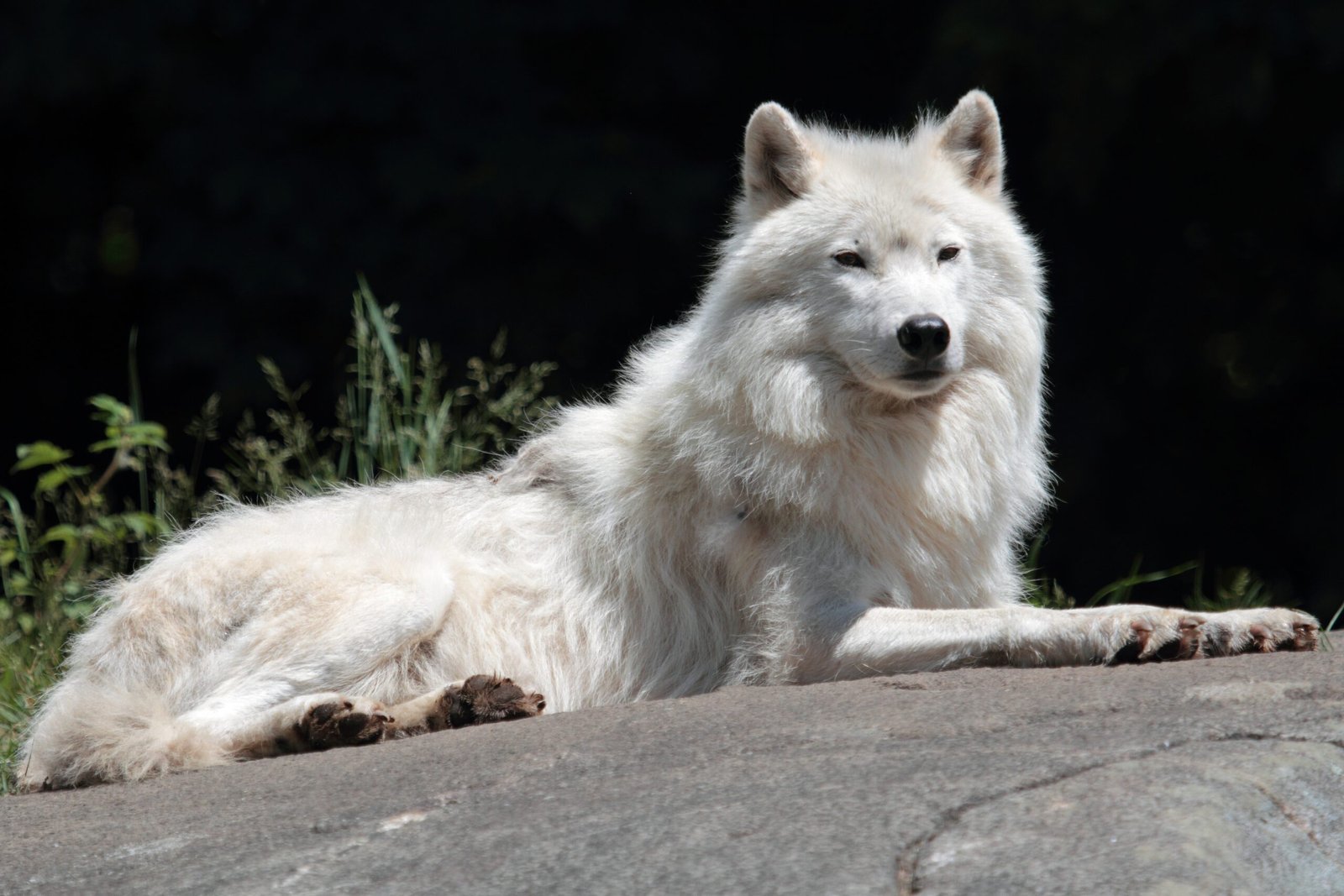Arctic wolves, with their mesmerizing white coats and piercing eyes, are creatures of mystery and beauty. These magnificent animals captivate dog lovers and wildlife enthusiasts alike. By understanding the truth about their habitat, diet, and ecological role, we can better appreciate these incredible animals and their importance in the wild.
The Chilling Habitat of Arctic Wolves
Arctic wolves are primarily found in the vast, icy expanses of the Arctic tundra. This harsh, frigid environment might seem inhospitable to many, but for these wolves, it is home. They roam regions stretching from northern Canada to Greenland, where temperatures can drop perilously low. The terrain is rugged, with snow-covered grounds and icy winds that test the endurance of even the hardiest creatures. One might think of the Arctic tundra as a blank, white canvas, but it’s teeming with life adapted to the cold. The wolves’ thick fur and compact bodies help them conserve warmth, allowing them to thrive where few other predators can. Their nomadic nature means they cover vast territories, sometimes spanning hundreds of miles, in search of food and shelter.
What’s on the Menu: The Diet of Arctic Wolves
The diet of an Arctic wolf is as fascinating as their habitat. These predators primarily hunt caribou and muskoxen, using their keen senses and teamwork to track and ambush these larger animals. Imagine a well-rehearsed dance, where each wolf plays its part with precision. When larger prey is scarce, Arctic wolves are opportunistic feeders. They won’t hesitate to hunt smaller animals like Arctic hares and lemmings. Occasionally, they might even scavenge on the remains left by other predators. Their adaptability in diet is crucial, especially in an environment where food can be unpredictable.
Social Dynamics and Pack Life
Arctic wolves are highly social animals, living and hunting in packs. These packs are usually family units, led by an alpha pair. The intricate social structure within a pack is a testament to their intelligence and adaptability. Much like a close-knit family, each member has a role, ensuring the pack’s survival. Communication among wolves is vital. They rely on a series of vocalizations, body postures, and facial expressions to convey messages. This communication is crucial during hunts, where coordination can mean the difference between feast and famine. Watching a pack of Arctic wolves in action is like witnessing a ballet on ice, each movement purposeful and precise.
Reproduction and Raising Pups
The continuation of the Arctic wolf lineage depends on successful reproduction and the nurturing of pups. Mating typically occurs in the winter months, with the alpha pair leading the way. After a gestation period of about 63 days, the female gives birth in the spring when conditions are slightly more forgiving. A litter can consist of 2 to 4 pups, though numbers can vary. These pups are born blind and helpless, relying entirely on their parents and pack members for survival. The entire pack plays a role in raising the young, from nursing to teaching them essential survival skills. This communal effort ensures that the next generation of Arctic wolves is well-prepared for the challenges of their environment.
Survival Tactics in an Icy Realm
Arctic wolves have a repertoire of survival tactics that allow them to endure the extreme conditions of their habitat. Their white fur serves as both camouflage against the snowy backdrop and insulation against the biting cold. When food is scarce, they can survive on little for extended periods, thanks to their efficient metabolism. In the face of threats, whether from humans or other predators, Arctic wolves rely on their speed and agility. Their acute senses, particularly their hearing and smell, alert them to dangers long before they become imminent. These survival strategies are a testament to their resilience and adaptability in one of the planet’s most unforgiving regions.
Ecological Role: Guardians of the Tundra

Arctic wolves play a crucial role in maintaining the delicate balance of the tundra ecosystem. As apex predators, they help regulate the populations of herbivores like caribou and muskoxen. By keeping these populations in check, they prevent overgrazing, which can lead to habitat degradation. Their presence also provides opportunities for scavengers, like foxes and birds, who rely on the remains of wolf kills for sustenance. This interconnectedness highlights the importance of Arctic wolves in the broader ecosystem. They are not just hunters but guardians of their realm, ensuring the tundra remains a vibrant and balanced ecosystem.
Challenges and Conservation Efforts
Despite their resilience, Arctic wolves face numerous challenges. Climate change poses a significant threat, altering the landscapes they call home. As ice caps melt and temperatures rise, their habitat shrinks, and prey becomes scarcer. Human activities, such as mining and oil exploration, further encroach on their territories. Conservation efforts are crucial to ensure the survival of Arctic wolves. Protecting their habitat, regulating hunting, and raising awareness about their ecological importance are vital steps. By understanding and valuing these wolves, we can work towards a future where they continue to roam the tundra, wild and free.
In conclusion, Arctic wolves are more than just symbols of the wild north; they are integral components of the Arctic ecosystem. Their survival, intricately linked to the health of their environment, reminds us of the delicate balance of nature. By safeguarding their future, we protect not only the Arctic wolves but the rich tapestry of life in the tundra.

Andrew Alpin from India is the Brand Manager of Doggo digest. Andrew is an experienced content specialist and social media manager with a passion for writing. His forte includes health and wellness, Travel, Animals, and Nature. A nature nomad, Andrew is obsessed with mountains and loves high-altitude trekking. He has been on several Himalayan treks in India including the Everest Base Camp in Nepal.






